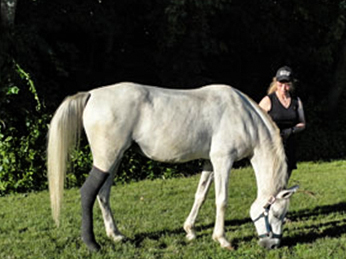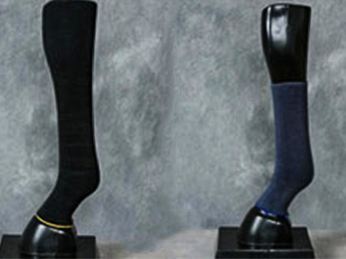



Busting the Myth on Compression Stockings
HEAL often gets inquiries about purchasing compression stockings to reduce chronically swollen legs. The clients are generally disappointed when they learn a compression stocking isn’t the appropriate protocol to reduce chronically swollen legs. This is an educational issue.
Here is the analogy I use to help educate owners.
If you are a size 14 pants, you will not get into size 9 pants. You will most likely get a workout you didn’t anticipate and the pants won’t get past your knees! Losing weight is the most realistic and recommended protocol to get into a size 9.
Trying to put a compression stocking on a horse with a huge swollen leg is simply dangerous. How long do you think the horse is going to stand there while you struggle to put it on and then take it off? It’s difficult to manufacture a tube-like compression stocking that will have enough compression and be easy to apply on a huge extremity.
So why is this so confusing?
Answer: Equine compression stockings are used prophylactically to help manage swollen extremities by helping move stagnant lymph fluid AFTER the initial swelling has been reduced. They are used to help maintain the integrity of the leg once the swelling is down to the best it is going to be. Then a compression stocking can certainly be a useful tool in managing it. Keep in mind chronically-swollen legs in a horse implies lymphatic impairment. Complete decongestive therapy protocol is essential in managing chronically swollen legs. This includes manual lymph drainage, proper wrapping, and proper application of compression stockings for a winning combination.
The compression stocking CAN also be used prophylactically for activities such as:
- Trail riding to protect the lower leg from injuries such as cuts
- Transporting your horse to prevent stocking up
- Preventing stocking up of a stall-bound horse
If you have any further questions, feel free to reach out to me and I’ll be able to help you.
